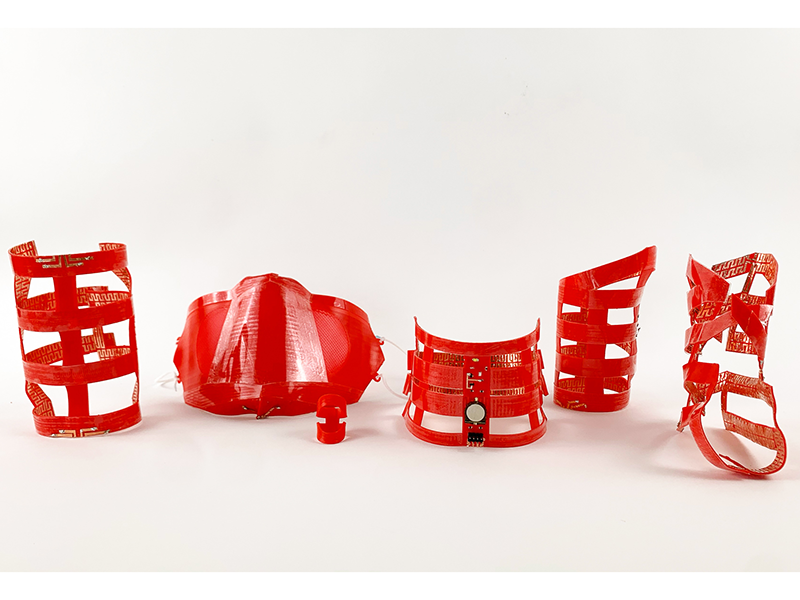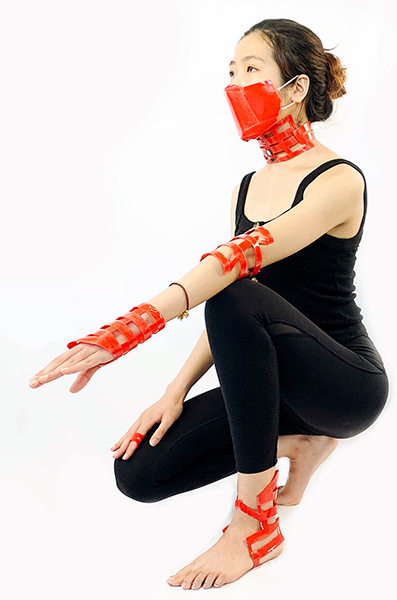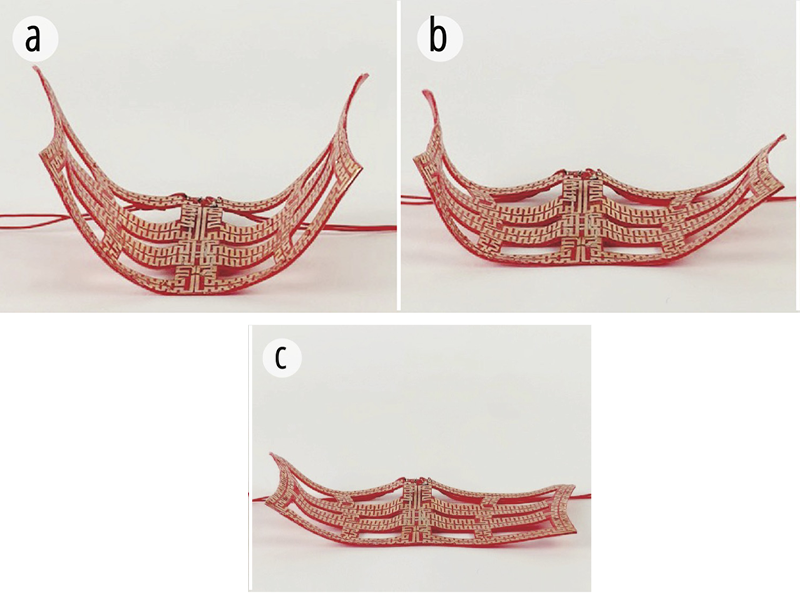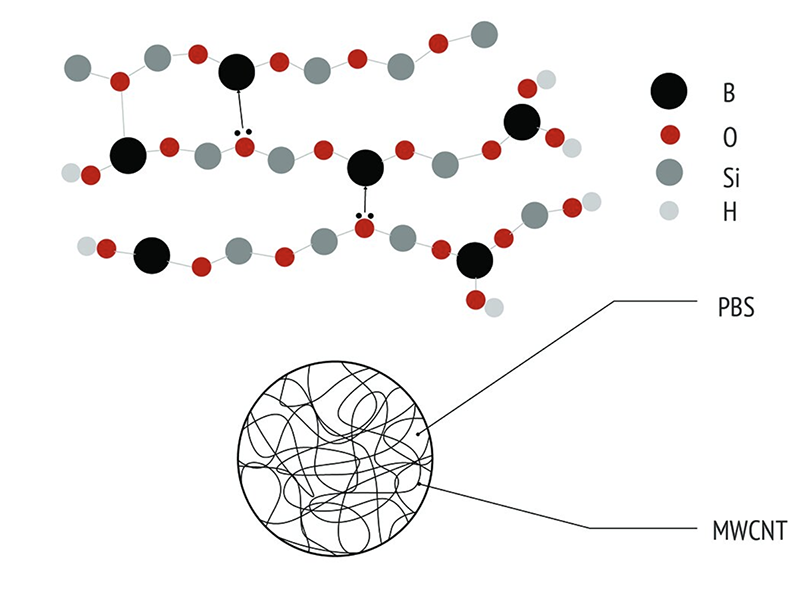Exos
Research thrust overview
Exos refers to smart reconfigurable orthotics, prosthetics, and casts that use embedded sensing, actuation, and stiffness turning materials to autonomously conform to the body and provide support for motor assistance, injury recovery, and rehabilitation. These are symbiotic materials that exhibit the following properties: self-healing damage, self-fusing seams to create seamless on-body casts, repeatable and reversible self-morphing and self-aware adaptation to different body parts, and shape configuration due to the ability to reconfigurable stress fields by kirigami and shape re-fusing.
Thrust projects described below include:
- ExoForm
- Self-healing user interfaces
- Soft, multifunctional composite
- Multifunctional metal composites
- Morphing matter for healthcare
ExoForm: shape memory and self-fusing semi-rigid wearables
Each year roughly six million Americans break a bone and head to their doctor for a plaster or fiberglass cast. After six long weeks of trying not to get the cast wet, and resisting the urge to itch the skin underneath, the patients return to their doctor to have the cast removed and tossed into the trash, unable to be used again. Our team has created a new material system that could change this standard in orthopedics: ExoForm.
Exoform is a compact, customizable and semi-rigid wearable material with self-fusing edges for immediate, adjustable, and repeatable use. It offers the unique ability to specifically conform to individual bodies without dependence on medical professionals. The Exoform cast distinguishes itself from the orthopedic materials currently available at local pharmacies such as finger splints and wristbands, in that it can successfully support a variety of complex body parts and adjust its stiffness throughout the healing process. It is also breathable and can be submerged in water, allowing for a more comfortable wearing experience.
This research was published in Association for Computing Machinery Computer Human Interaction 2021 (ACM CHI).
Self-healing user interfaces
A “smart” polymer cast that automatically seals itself around a broken arm, a membrane that can sense where it has been cut, and pneumatic actuators that can be cut and reconfigured into different shapes are some possible applications for a new self-healing material developed by the team. The composite material has unique characteristics that allow it to heal and make it possible for devices made from it to regain their functionality—or gain new functionality—after being cut. When the cut ends of the material are placed back together, the pieces reconnect and the seam between them eventually disappears. The newly developed material works differently. It combines two materials—polyborosiloxane (PBS), a self-healing polymer, and multiwalled carbon nanotubes (MWCNTs), which provide conductivity. Surprisingly, this hybrid material doesn’t flow when cut. It retains its shape, yet can self-heal.
The researchers reported on the material and their first set of devices last fall at the Association for Computing Machinery’s Symposium on User Interface Software and Technology (UIST) in New Orleans. The team now is working on applications that involve self-actuation and self-assembly.
Soft, multifunctional composite
In the Proceedings of the National Academy of Sciences, we report on a novel class of soft multifunctional composite materials made with liquid crystal elastomer (LCE). LCE is embedded with microdroplets of liquid metal (LCE), which improves thermal conductivity and can make the material electrically conductive.
We show that the LCE-LM can be programmed to reversibly deform into complex shapes when activated with heat or electricity. We also show that it can function like a soft “artificial muscle” actuator that can be electrically operated and sustain mechanical damage without failing.
For more details, check out the full article in PNAS.
Multifunctional metal composites
Soft composites that use droplets of gallium-based liquid metal have the potential for transformative impact in multifunctional material engineering. Researchers at Carnegie Mellon University have developed a method to synthesize composites with high stretchability, negligible electromechanical coupling, Joule-heated healing and reprocessability, and electrical and mechanical self-healing that can be printed. This approach to controlled assembly represents a widely-applicable technique for creating new classes of liquid metal composites with unprecedented multifunctionality.
Morphing materials for healthcare
Our team participated at TEDxCMU ’21 on the following topics.
Maria Vlachostergiou presented ExoForm, a novel approach to the fabrication and design of morphing, self-fusing, semi-rigid wearables, whose interactive properties empower their users functionally and socially in any environment.
Cathy Fang presented Morphace, a new design strategy that allows makeup wearables to seamlessly “camouflage” on human face and transform it by creating facial features and muscle movements.
Rosalie Lin presented ExoBreast, a user-centered design and fabrication method for developing breast prosthetics for cancer survivors that augment their body and female identity.






